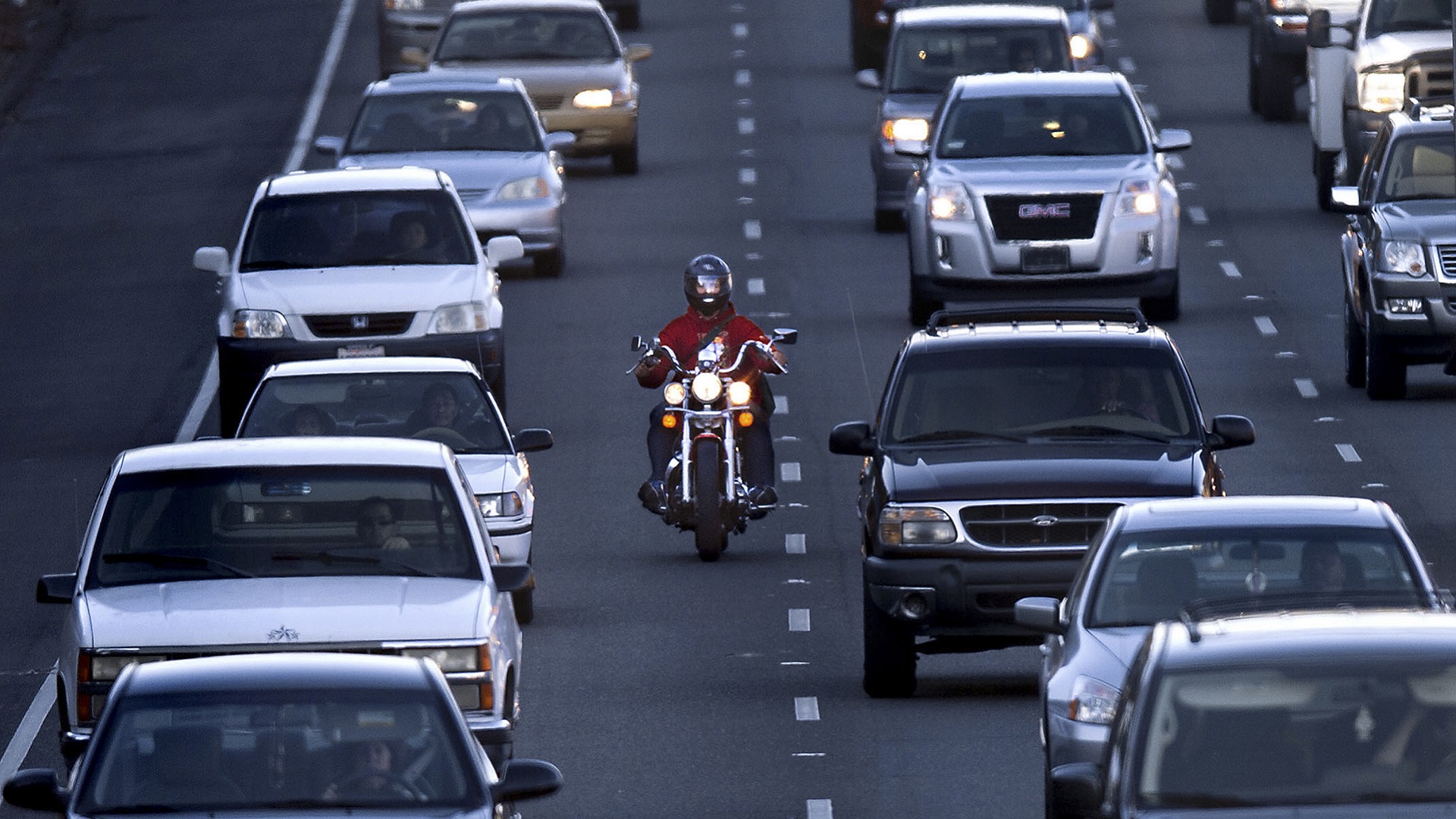

We may earn revenue from the products available on this page and participate in affiliate programs. Learn more ›
A video recently uploaded depicts a motorcyclist lane-splitting between a Tesla Model 3, cruising on Autopilot, and a Toyota Prius. When the motorcyclist wasn’t given adequate space to split, he pushed the Model 3’s side-view mirror forward. Before either side of the argument heads to the comments, I’ll be very clear, both the motorcycle rider and the inattentive Model 3 driver are both very much in the wrong.
In California, where the incident occurred, lane-splitting is legal. It gives the smaller motorcycle the right to dip between lanes of traffic so as to reduce overall congestion. When done safely and properly, it’s truly the only way to quickly get around heavily congested cities like Los Angeles. Per California’s Department of Transportation, however, car drivers should give motorcycles the right of way and make adequate space for safer travel. The safe execution of splitting, though, rests solely on the motorcyclist. That means commonsense is absolutely required.
The incident in the video, which the Model 3’s owner calls an “attack,” is a prime example of how both parties can be in the wrong. As to the commonsense aspect, the motorcyclist could have waited for a better opportunity to pass the Model 3. In the five years I’ve been riding motorcycles in Los Angeles, I’ve clocked nearly 60,000 miles. A large portion of that was lane-splitting. Waiting a handful of seconds or maybe a minute isn’t going to affect your overall time. And being aggressive toward a driver will only cause further tension between motorcyclists and drivers. It’s a lose, lose situation.

Likewise, the Model 3 driver, who claims the car was on Autopilot, didn’t give adequate space for the motorcyclist, nor were they paying attention to their surroundings. As we’ve maintained whenever the system is brought up, Autopilot isn’t autonomous and when you agree to use the advanced driver-assistance system, you’re required to confirm that you’ll pay attention and be ready to take over control of the car. The Model 3 driver didn’t do this. Moreover, claiming they were “attacked” further enflames the situation as in no way could this be considered an attack. The situation, however, presents an interesting variable for Tesla’s Autopilot software.
Neither human nor machine motorcycle detention is great. Autopilot’s motorcycle detection has been spotty at best and inattentive human drivers share similar results. However, this seems to be where Tesla’s adaptive software could shine and truly be better than human cognition. Lane-splitting motorcyclists are often right in a car’s blind spot. Humans can’t see through or around those impediments. Machines, however, can. If Tesla or other automated systems are provided with more accurate sensor hardware such as LIDAR—which has far more accurate environmental rendering capabilities than pure sonar, radar, and video monitoring—the systems could make riding a motorcycle far safer.
The video, however, shows that both motorcycle riders and car drivers need to respect one another more. Car drivers should remember that motorcyclists are far more vulnerable and motorcyclists need to understand that antics like this only increases tensions between the groups.